Cyclic hydrocarbons
Cyclic hydrocarbon, also known as closed-chain hydrocarbon, is the general term of hydrocarbons with cyclic structure. It refers to that a hydrocarbon has its inter-molecular carbons attached to each other to form a cyclic hydrocarbon. According to the structure and properties, it can be divided into alicyclic hydrocarbons and aromatic hydrocarbons. But general cyclic refers to alicyclic hydrocarbons. According to the number of cylinders, it can be further divided into monocyclic, bicyclic, tricyclic and other cyclic hydrocarbons.
Aromatic hydrocarbon refers to the closed-chain hydrocarbon containing a benzene ring or having the basic characteristics of the aromatic compound. It can be divided into mono-cyclic aromatic hydrocarbon, polycyclic aromatic hydrocarbon and non-benzene aromatic hydrocarbons. For monocyclic aromatic hydrocarbon, its molecule contains only one benzene ring, such as toluene, xylene, ethylbenzene, styrene, benzene and acetylene. Polycyclic aromatic hydrocarbon contains two or more benzene rings.
According to the interconnected ways of benzene ring, it can be divided into:
1. polybenzo-aliphatic hydrocarbons including diphenylmethane, triphenylmethane, stilbene, styrene and so on;
2. Biphenyl and polybenzene, such as biphenyl, terphenyl and tetraphenyl, etc;
3. polycyclic aromatic hydrocarbons such as naphthalene, anthracene, phenanthrene, indene, fluorene, acenaphthene, pyrene, coronene and so on;
Non-aromatic hydrocarbon is the hydrocarbon containing certain aromatic property but containing no benzene ring such as azulene and annulene. It is easy to have substitution reaction while being not easy to have addition reaction with the ring being not easy to be broken. It is mainly obtained through from the distillate of coal tar and the aromatization product of oil. It can be used as a solvent and chemical raw material.
Alicyclic hydrocarbon is a kind of closed chain hydrocarbon with property of aliphatic compound. It can be divided into saturated cycloalkanes and unsaturated cyclic olefins.
Cycloalkane is mainly presented in petroleum and is the component of petroleum products. The cycloalkanes contained in liquid fuels and solvents have small molecular weight with the molecular weight of it contained in the lubricant being large. In the production of chemical industry, they are also used as raw material and solvent. Cyclo-olefin is the byproduct of the petro-chemistry and coal chemistry to be used as a chemical raw material. The alicyclic hydrocarbon contained in a plant is called as terpenes (part of the terpene belongs to open chain hydrocarbons). The commonly used terpene mixture in industry is turpentine. This kind of compound is mostly flammable liquid, and its vapor in air at room temperature can reach explosive concentrations.
On toxicology, alicyclic hydrocarbon is similar to the corresponding open chain hydrocarbons. Generally speaking, alicyclic hydrocarbon belongs to anesthetic reagents and central nervous system depressants. The anesthesia effect upon inhalation of Cycloalkane is stronger than that upon inhalation of corresponding open-chain hydrocarbon. The anesthesia effect of the cyclic olefin can be enhanced with the increasing number of double bonds in the molecular structure. The acute toxicity of the cycloaliphatic is low and can be almost all discharged from the body, generally without the risk of causing chronic poisoning. Liquid alicyclic hydrocarbon has skin irritation with high concentrations of vapor being able to produce irritation. Cycloolefin has a larger irritation effect than naphthenes. Direct inhalation of liquid alicyclic hydrocarbons can cause pneumonia, pulmonary edema and pulmonary hemorrhage. No matter whether being inhaled or administrated orally or percutaneously into the body, it hasn’t been identified of the damaging effect of alicyclic hydrocarbons on the hematopoietic tissue.
- Structure:

- Chemical Name:1,2-EPOXYTETRADECANE
- CAS:3234-28-4
- MF:C14H28O
- Structure:
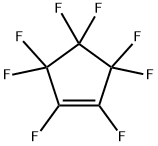
- Chemical Name:OCTAFLUOROCYCLOPENTENE
- CAS:559-40-0
- MF:C5F8
- Structure:
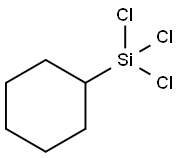
- Chemical Name:Cyclohexyltrichlorosilane
- CAS:98-12-4
- MF:C6H11Cl3Si
- Structure:
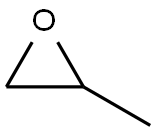
- Chemical Name:Propylene oxide
- CAS:75-56-9
- MF:C3H6O
- Structure:

- Chemical Name:N-NONADECYLCYCLOHEXANE
- CAS:22349-03-7
- MF:C25H50
- Structure:

- Chemical Name:N-BUTYLCYCLOHEXANE
- CAS:1678-93-9
- MF:C10H20
- Structure:
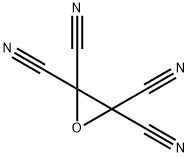
- Chemical Name:TETRACYANOETHYLENE OXIDE
- CAS:3189-43-3
- MF:C6N4O
- Structure:
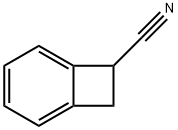
- Chemical Name:1-Benzocyclobutenecarbonitrile
- CAS:6809-91-2
- MF:C9H7N
- Structure:

- Chemical Name:HEXYLCYCLOHEXANE
- CAS:4292-75-5
- MF:C12H24
- Structure:
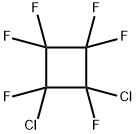
- Chemical Name:1,2-DICHLOROHEXAFLUOROCYCLOBUTANE
- CAS:356-18-3
- MF:C4Cl2F6
- Structure:

- Chemical Name:Epichlorohydrin
- CAS:106-89-8
- MF:C3H5ClO
- Structure:

- Chemical Name:4-METHYL-1-CYCLOHEXENE
- CAS:591-47-9
- MF:C7H12
- Structure:
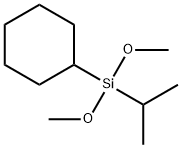
- Chemical Name:Dicyclopentyldimethoxysilane
- CAS:131390-32-4
- MF:C11H24O2Si
- Structure:

- Chemical Name:TRIMETHYLENE SULFIDE
- CAS:287-27-4
- MF:C3H6S
- Structure:

- Chemical Name:4-Bromobenzocyclobutene
- CAS:1073-39-8
- MF:C8H7Br
- Structure:
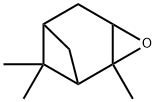
- Chemical Name:ALPHA-PINENE OXIDE
- CAS:1686-14-2
- MF:C10H16O
- Structure:
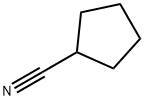
- Chemical Name:CYCLOPENTANECARBONITRILE
- CAS:4254-02-8
- MF:C6H9N
- Structure:

- Chemical Name:3-CHLOROCYCLOHEXENE
- CAS:2441-97-6
- MF:C6H9Cl
- Structure:

- Chemical Name:ETHYLCYCLOPENTANE
- CAS:1640-89-7
- MF:C7H14
- Structure:

- Chemical Name:GLYCIDYL METHYL ETHER
- CAS:930-37-0
- MF:C4H8O2
- Structure:

- Chemical Name:N-HEPTYLCYCLOHEXANE
- CAS:5617-41-4
- MF:C13H26
- Structure:

- Chemical Name:N-OCTYLCYCLOHEXANE
- CAS:1795-15-9
- MF:C14H28
- Structure:
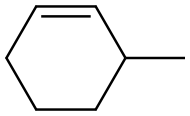
- Chemical Name:3-METHYL-1-CYCLOHEXENE
- CAS:591-48-0
- MF:C7H12
- Structure:
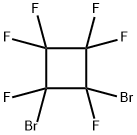
- Chemical Name:1,2-DIBROMOHEXAFLUOROCYCLOBUTANE
- CAS:377-40-2
- MF:C4Br2F6
- Structure:
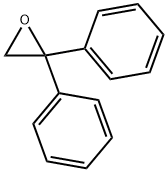
- Chemical Name:2,2-DIPHENYLOXIRANE
- CAS:882-59-7
- MF:C14H12O
- Structure:

- Chemical Name:alpha-Pinene oxide
- CAS:72936-74-4
- MF:C10H16O
- Structure:
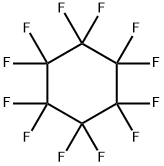
- Chemical Name:PERFLUOROCYCLOHEXANE
- CAS:355-68-0
- MF:C6F12
- Structure:

- Chemical Name:2-HYDROXYMETHYLOXETANE
- CAS:61266-70-4
- MF:C4H8O2
- Structure:
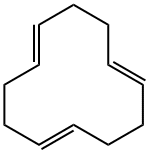
- Chemical Name:TRANS,TRANS,TRANS-1,5,9-CYCLODODECATRIENE
- CAS:676-22-2
- MF:C12H18
- Structure:

- Chemical Name:CYCLODECANE
- CAS:293-96-9
- MF:C10H20
- Structure:

- Chemical Name:ISOBUTYLCYCLOBUTANE
- CAS:1678-98-4
- MF:C10H20
- Structure:

- Chemical Name:DODECYLCYCLOHEXANE
- CAS:1795-17-1
- MF:C18H36
- Structure:
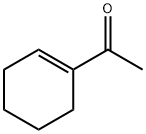
- Chemical Name:1-ACETYL-1-CYCLOHEXENE
- CAS:932-66-1
- MF:C8H12O
- Structure:
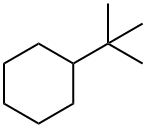
- Chemical Name:TERT-BUTYLCYCLOHEXANE
- CAS:3178-22-1
- MF:C10H20
- Structure:
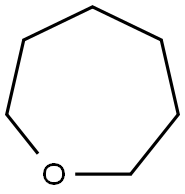
- Chemical Name:HEXAMETHYLENE OXIDE
- CAS:592-90-5
- MF:C6H12O
- Structure:

- Chemical Name:2-CYCLOHEXYLETHYL BROMIDE
- CAS:1647-26-3
- MF:C8H15Br
- Structure:
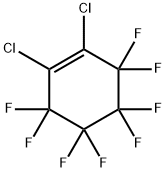
- Chemical Name:1,2-DICHLOROOCTAFLUOROCYCLOHEX-1-ENE
- CAS:336-19-6
- MF:C6Cl2F8
- Structure:
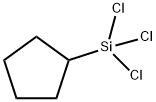
- Chemical Name:CYCLOPENTYLTRICHLOROSILANE
- CAS:14579-03-4
- MF:C5H9Cl3Si
- Structure:
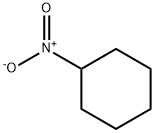
- Chemical Name:NITROCYCLOHEXANE
- CAS:1122-60-7
- MF:C6H11NO2
- Structure:

- Chemical Name:3-CYANOPROPYLTRICHLOROSILANE
- CAS:1071-27-8
- MF:C4H6Cl3NSi
- Structure:
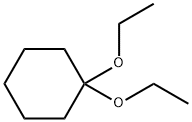
- Chemical Name:CYCLOHEXANONE DIETHYL ACETAL
- CAS:1670-47-9
- MF:C10H20O2
- Structure:
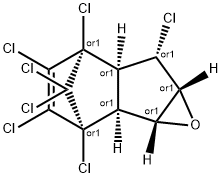
- Chemical Name:CIS-HEPTACHLOREPOXIDE EXO-, ISOMER B
- CAS:1024-57-3
- MF:C10H5Cl7O
- Structure:
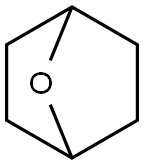
- Chemical Name:7-OXABICYCLO[2.2.1]HEPTANE
- CAS:279-49-2
- MF:C6H10O
- Structure:
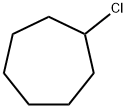
- Chemical Name:CYCLOHEPTYL CHLORIDE
- CAS:2453-46-5
- MF:C7H13Cl
- Structure:

- Chemical Name:CIS-2,3-EPOXYBUTANE
- CAS:1758-33-4
- MF:C4H8O
- Structure:

- Chemical Name:IODOCYCLOPENTANE
- CAS:1556-18-9
- MF:C5H9I
- Structure:

- Chemical Name:1,2-EPOXYHEPTANE
- CAS:5063-65-0
- MF:C7H14O
- Structure:
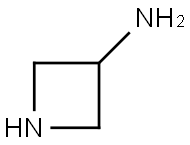
- Chemical Name:3-AMINOAZETIDINE
- CAS:102065-86-1
- MF:C3H8N2
- Structure:

- Chemical Name:METHYLENECYCLOHEXANE
- CAS:1192-37-6
- MF:C7H12
- Structure:
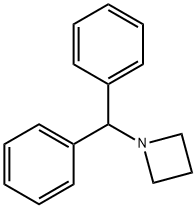
- Chemical Name:1-Diphenylmethylazetidine
- CAS:107128-00-7
- MF:C16H17N
- Structure:

- Chemical Name:METHYLENECYCLOPENTANE
- CAS:1528-30-9
- MF:C6H10
- Structure:
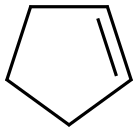
- Chemical Name:Cyclopentene
- CAS:142-29-0
- MF:C5H8
- Structure:
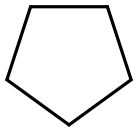
- Chemical Name:Cyclopentane
- CAS:287-92-3
- MF:C5H10
- Structure:

- Chemical Name:N-UNDECYLCYCLOHEXANE
- CAS:54105-66-7
- MF:C17H34
- Structure:
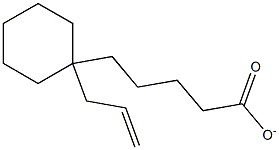
- Chemical Name:ALLYLCYCLOHEXANEVALERATE
- CAS:
- MF:C14H23O2-
- Structure:
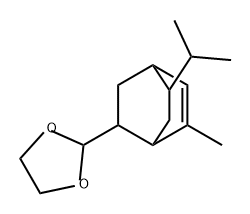
- Chemical Name:GLYCOLIERRAL
- CAS:68901-32-6
- MF:C15H24O2
- Structure:

- Chemical Name:Azidocyclopentane
- CAS:33670-50-7
- MF:C5H9N3
- Structure:
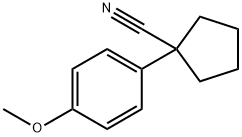
- Chemical Name:1-(4-METHOXYPHENYL)-1-CYCLOPENTANECARBONITRILE
- CAS:1206-15-1
- MF:C13H15NO
- Structure:
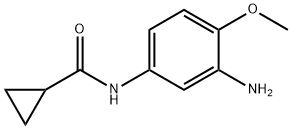
- Chemical Name:N-(3-amino-4-methoxyphenyl)cyclopropanecarboxamide
- CAS:1082156-54-4
- MF:C11H14N2O2
- Structure:
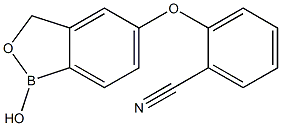
- Chemical Name:2-(1-Hydroxy-1,3-dihydro-benzo[c][1,2]oxaborol-5-yloxy)-benzonitrile
- CAS:
- MF:C14H10BNO3
- Structure:

- Chemical Name:1 1-BIS(TERT-AMYLPEROXY)CYCLOHEXANE
- CAS:15667-10-4
- MF:C16H32O4
- Structure:

- Chemical Name:1-Benzylazetidin-3-ol
- CAS:54881-13-9
- MF:C10H13NO
- Structure:
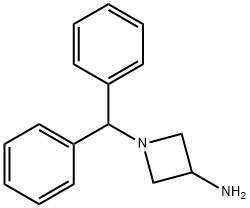
- Chemical Name:3-Amino-1-diphenylmethylazetidine
- CAS:40432-52-8
- MF:C16H18N2
- Chemical Name:TERPINEN-4-OL(SG)
- CAS:
- MF:C10H18O
- Structure:
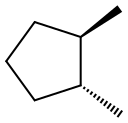
- Chemical Name:trans-1,2-DiMethylcyclopentane
- CAS:822-50-4
- MF:C7H14
- Structure:
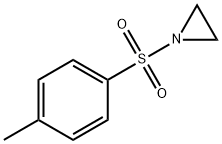
- Chemical Name:1-(P-TOSYL)AZIRIDINE
- CAS:3634-89-7
- MF:C9H11NO2S
- Structure:
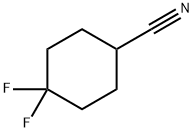
- Chemical Name:CYCLOHEXANECARBONITRILE, 4,4-DIFLUORO-
- CAS:922728-21-0
- MF:C7H9F2N
- Structure:
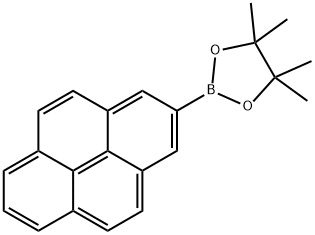
- Chemical Name:1,3,2-DIOXABOROLANE, 4,4,5,5-TETRAMETHYL-2-(2-PYRENYL)-
- CAS:853377-11-4
- MF:C22H21BO2
- Structure:
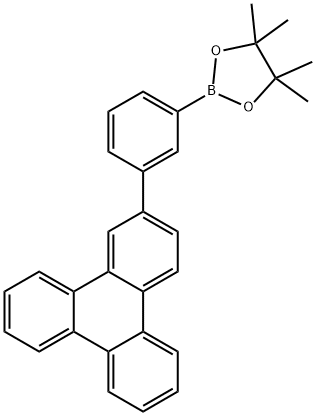
- Chemical Name:4,4,5,5-tetraMethyl-2-(3-(triphenylen-2-yl)phenyl)-1,3,2-dioxaborolane
- CAS:1115639-92-3
- MF:C30H27BO2
- Structure:

- Chemical Name:1-Bromo-cyclopropanecarbonitrile
- CAS:1350746-42-7
- MF:C4H4BrN
- Structure:

- Chemical Name:1,1-Bis(iodomethyl)cyclopropane
- CAS:83321-23-7
- MF:C5H8I2
- Structure:

- Chemical Name:Butyl 1-allylcyclopropanesulfonate
- CAS:923032-56-8
- MF:C10H18O3S
- Structure:
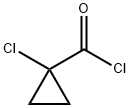
- Chemical Name:1-chloro-1-chloro-acetyl-cyclopropane
- CAS:73492-25-8
- MF:C4H4Cl2O
- Structure:
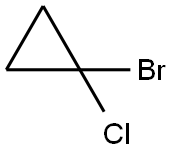
- Chemical Name:1-bromo- 1-chlorocyclopropane
- CAS:108817-33-0
- MF:C3H4BrCl
- Structure:
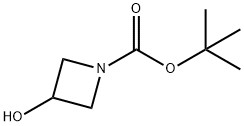
- Chemical Name:1-N-Boc-3-hydroxyazetidine
- CAS:141699-55-0
- MF:C8H15NO3
- Structure:

- Chemical Name:(1R,2R)-1-bromo-2-(trifluoromethoxy)cyclohexane
- CAS:2070902-66-6
- MF:C7H10BrF3O
- Structure:

- Chemical Name:HYDROXYDICYCLOPENTADIENE
- CAS:37275-49-3
- MF:C10H14O
- Chemical Name:4,4'-(4'-pentylbi(cyclohexane)-4,4-diyl)dianiline
- CAS:
- MF:
- Structure:

- Chemical Name:Cyclohexane, [2-(ethenyloxy)ethyl]-
- CAS:103983-46-6
- MF:C10H18O
- Structure:

- Chemical Name:1,1-bis-(Bromomethyl)-cyclopropane
- CAS:29086-41-7
- MF:C5H8Br2
- Structure:
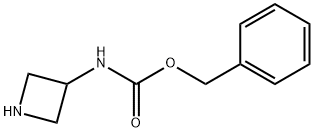
- Chemical Name:3-(Cbz-Amino)-azetidine
- CAS:914348-04-2
- MF:C11H14N2O2
- Structure:

- Chemical Name:Rosin Amine
- CAS:1001-02-1
- MF:C20H38O6
- Structure:

- Chemical Name:1,3-DIMETHYLADAMANTANE-5,7-DIOL
- CAS:10347-01-0
- MF:C12H20O2
- Structure:

- Chemical Name:Trans-1-(bromomethyl)-4-propylcyclohexane
- CAS:71458-12-3
- MF:C10H19Br
- Structure:
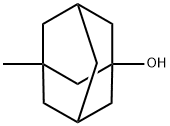
- Chemical Name:3-Methyl-1-adamantanol
- CAS:702-81-8
- MF:C11H18O
- Chemical Name:A-836339
- CAS:
- MF:
- Structure:
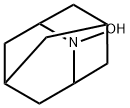
- Chemical Name:2-Hydroxy-2-azaadaMantane
- CAS:1155843-79-0
- MF:C9H15NO
- Structure:
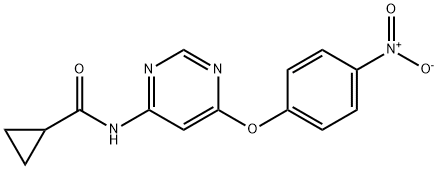
- Chemical Name:N-(6-(4-nitrophenoxy)pyriMidin-4-yl)cyclopropanecarboxaMide
- CAS:1421227-55-5
- MF:C14H12N4O4
- Structure:

- Chemical Name:PROPYLCYCLOHEXANE
- CAS:1678-92-8
- MF:C9H18
- Structure:
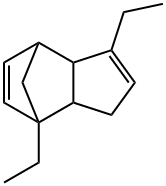
- Chemical Name:Diethyldicyclopentadiene
- CAS:307496-25-9
- MF:C14H20
- Structure:

- Chemical Name:1,2-EPOXY-7-OCTENE
- CAS:19600-63-6
- MF:C8H14O
- Structure:

- Chemical Name:1,2-diethyldiaziridine
- CAS:6794-94-1
- MF:C5H12N2
- Structure:
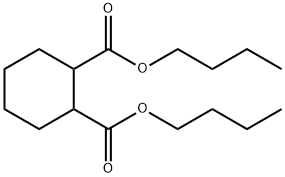
- Chemical Name:1,2-CYCLOHEXANEDICARBOXYLIC ACID, DIBUTYL ESTER
- CAS:62950-20-3
- MF:C16H28O4
- Structure:
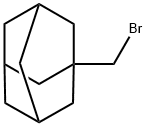
- Chemical Name:1-(BROMOMETHYL)ADAMANTANE
- CAS:14651-42-4
- MF:C11H17Br
- Structure:
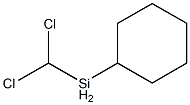
- Chemical Name:METHYLCYCLOHEXYLDICHLOROSILANE
- CAS:5578-42-7
- MF:C7H14Cl2Si
- Structure:

- Chemical Name:(S)-(-)-4-Chloromethyl-2,2-dimethyl-1,3-dioxolane
- CAS:60456-22-6
- MF:C6H11ClO2
- Structure:
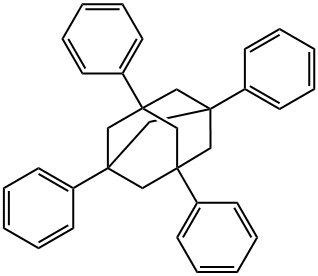
- Chemical Name:1,3,5,7-TETRAPHENYLADAMANTANE
- CAS:16004-75-4
- MF:C34H32
- Structure:
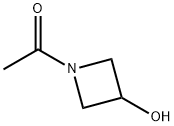
- Chemical Name:1-Acetyl-3-hydroxyazetidine
- CAS:118972-96-6
- MF:C5H9NO2
- Structure:
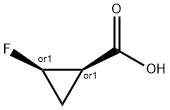
- Chemical Name:(1S,2S)-2-fluorocyclopropanecarboxylic acid
- CAS:105919-34-4
- MF:C4H5FO2
- Structure:

- Chemical Name:2-Cyclopropylethyl bromide
- CAS:36982-56-6
- MF:C5H9Br